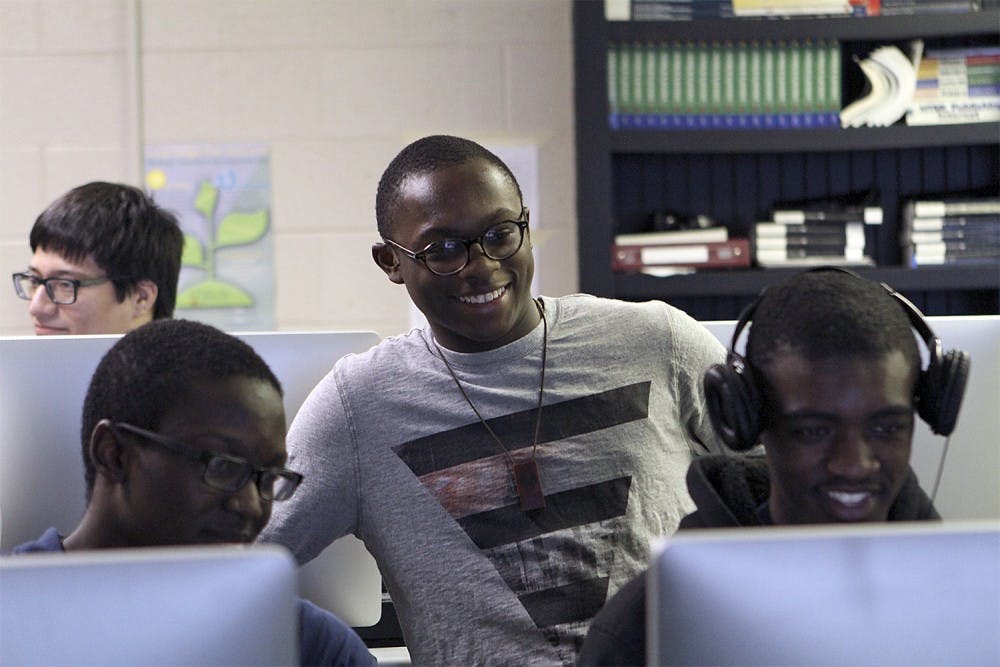“We saw some pretty frightening numbers in terms of disparity,” Kelley said. “Some patterns that, frankly, were kind of silly.”
Defiance, disruption and disrespect
Maria Palmer, a member of the Chapel Hill Town Council, said the disproportionate numbers are troubling. She said the concepts of defiance, disruption and disrespect are subjective — adding that the terms are vague and minority students tend to be targeted.
“White teachers don’t understand some of the cultural differences,” she said. “The same behavior by a white student they explain to themselves differently and respond differently.”
Palmer said the school district needs to hire more minority teachers and focus on minority students who might be struggling in the classroom.
“We can push the school system to do more,” she said.
Ben Blaisdell, a professor at East Carolina University who studies race and racism in schools, said teachers and administrators can act on implicit bias. He said well-intentioned teachers don’t realize they call out minority students for behaviors that would be ignored or dismissed in white students.
“It comes from a society that has taught people to see people who are not white as problematic,” he said. “In any district that has a certain amount of privilege, and CHCCS certainly does, people want to protect that privilege.”
The effects of implicit bias on minority students can be severe, Blaisdell said. Out-of-school suspensions increase the likelihood of a student dropping out and can tank grades.
“Some students can shut down in that situation and become very quiet,” he said. “Others become hyper-visible. They feel like they are being silenced and cannot be free, open and vocal in the classroom.”
Rep. Graig Meyer, D-Orange, worked as a teacher in Chapel Hill-Carrboro City Schools and served as director of student equity for the district. He also directed the district’s Blue Ribbon Mentor-Advocate program, which pairs young minority students with an older student who acts as a mentor and tutor.
Meyer said teachers are only part of the society-wide problem.
To get the day's news and headlines in your inbox each morning, sign up for our email newsletters.
“Teachers want disciplinary problems out of their class so they can focus on teaching and helping students who want to learn. We really have to engage teachers to solve this problem,” he said. “We don’t need to blame anyone. We need to collaborate.”
Making changes
Lee’s experiences, on a bench outside the library and throughout his time in Chapel Hilll-Carrboro City Schools, have roused him to change classrooms for minority students. He has plans to study social justice in college next year and wants to be an advocate for minorities.
Lee is involved in the Multicultural Student Achievement Network, which helps tutor younger minority students and hosts talks with Teach For America participants about diversity in classrooms. He has also been vocal about disparity in discipline between minority and white students.
He is not the only one in the district trying to make changes.
Kelley, the chairman of the board, said the district is trying to move away from punishment and toward improving student behavior.
“The goal of our institutions is to educate kids, not punish them,” he said.
Meyer said the district is taking steps to improve equity in discipline. He said the report that highlights disparity between black and white students shows that the district is trying to tackle the problem.
“I’d argue that CHCCS’s willingness to focus on this challenge puts it ahead of many districts,” he said.
Meyer is now looking at the problem on a statewide level. He said he wants to improve the way the state collects and shares data about student discipline, and start school report cards that measure if schools are reducing disproportionalities.
Blaisdell works with Chapel Hill-Carrboro City Schools district to improve racial disparity. He said since the board started looking at the issue, the number of out-of-school suspensions across the board and among minority students has dropped. But that is also to be expected, since the number of black students in the district has decreased by 12 percent, according to the report.
“The district is trying to do something positive,” he said. “On some issues they are moving a little too slowly.”
special.projects@dailytarheel.com



